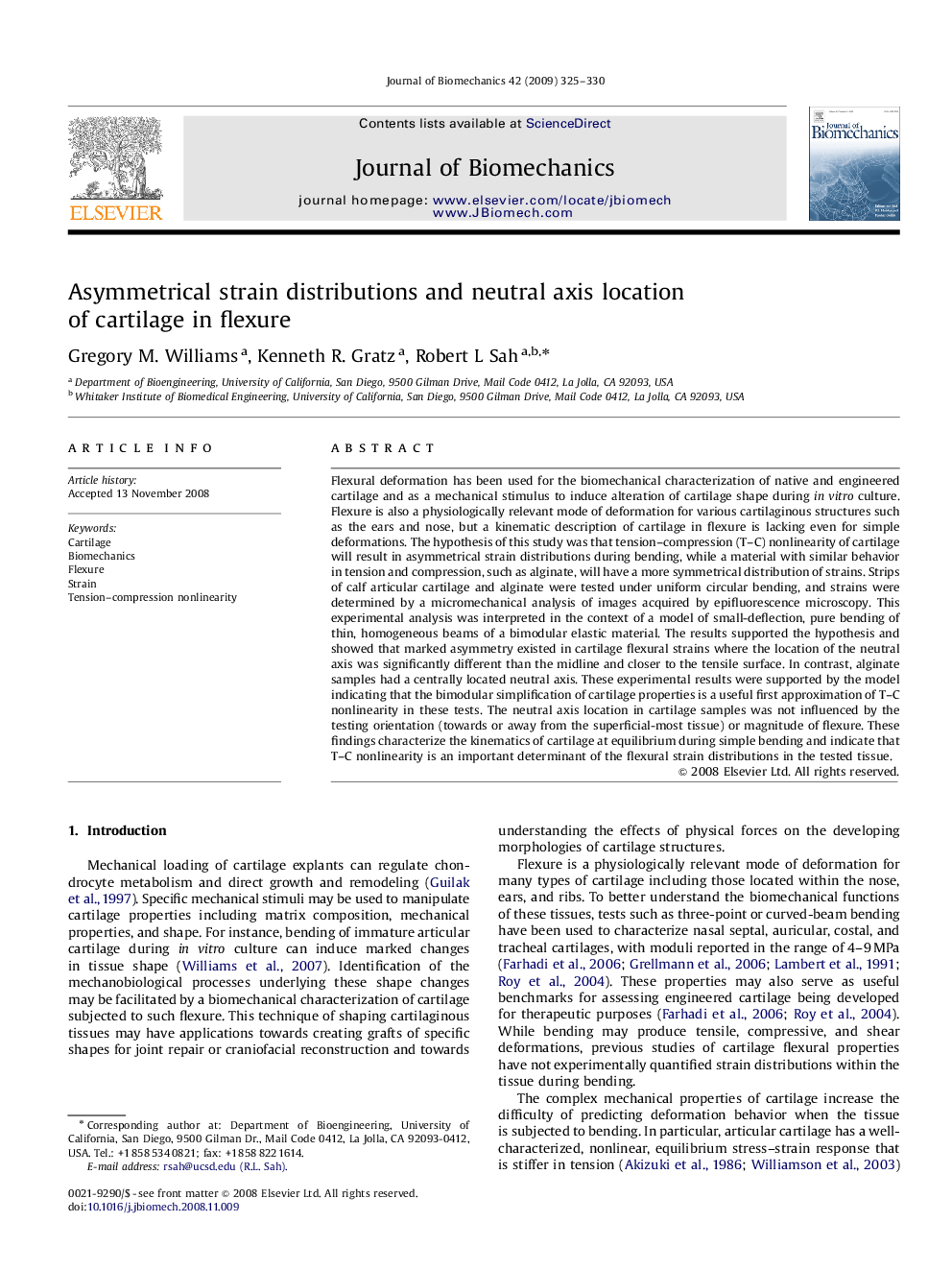| کد مقاله | کد نشریه | سال انتشار | مقاله انگلیسی | نسخه تمام متن |
|---|---|---|---|---|
| 874579 | 910342 | 2009 | 6 صفحه PDF | دانلود رایگان |

Flexural deformation has been used for the biomechanical characterization of native and engineered cartilage and as a mechanical stimulus to induce alteration of cartilage shape during in vitro culture. Flexure is also a physiologically relevant mode of deformation for various cartilaginous structures such as the ears and nose, but a kinematic description of cartilage in flexure is lacking even for simple deformations. The hypothesis of this study was that tension–compression (T–C) nonlinearity of cartilage will result in asymmetrical strain distributions during bending, while a material with similar behavior in tension and compression, such as alginate, will have a more symmetrical distribution of strains. Strips of calf articular cartilage and alginate were tested under uniform circular bending, and strains were determined by a micromechanical analysis of images acquired by epifluorescence microscopy. This experimental analysis was interpreted in the context of a model of small-deflection, pure bending of thin, homogeneous beams of a bimodular elastic material. The results supported the hypothesis and showed that marked asymmetry existed in cartilage flexural strains where the location of the neutral axis was significantly different than the midline and closer to the tensile surface. In contrast, alginate samples had a centrally located neutral axis. These experimental results were supported by the model indicating that the bimodular simplification of cartilage properties is a useful first approximation of T–C nonlinearity in these tests. The neutral axis location in cartilage samples was not influenced by the testing orientation (towards or away from the superficial-most tissue) or magnitude of flexure. These findings characterize the kinematics of cartilage at equilibrium during simple bending and indicate that T–C nonlinearity is an important determinant of the flexural strain distributions in the tested tissue.
Journal: Journal of Biomechanics - Volume 42, Issue 3, 9 February 2009, Pages 325–330